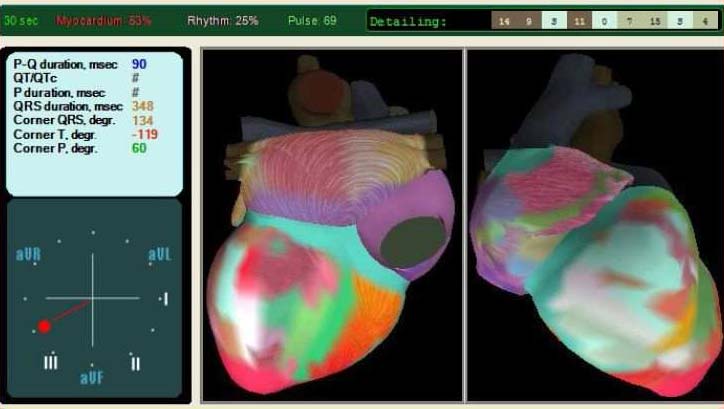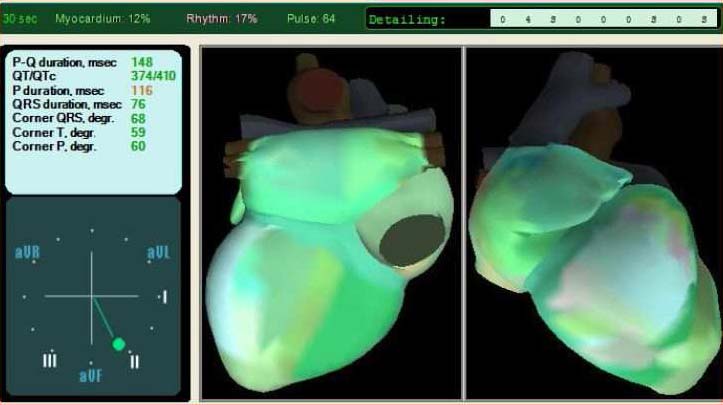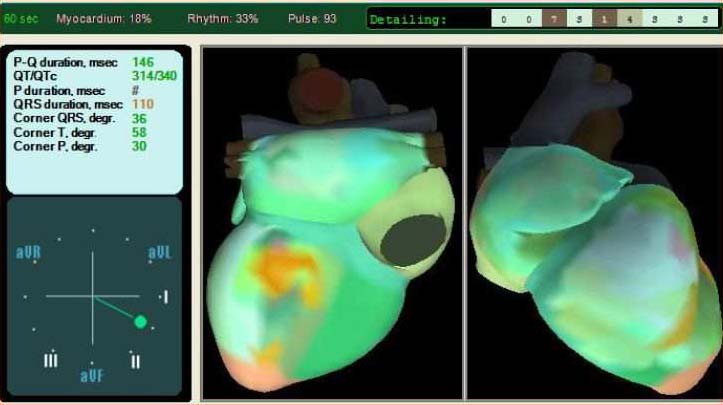A FRESH LOOK AT HEALTH SCREENING: Tomorrow’s Screening Today
For some years now I have been working with Breast Thermal Imaging which is based on detection of infrared heat emission from the breast tissue. The latter is a consequence of increased metabolism and/or new blood vessel formation both of which produce heat that can be detected much sooner than the structural changes seen on a mammogram.
Over the last 5 years my work on nutritional medicine and cellular health, has led to a compilation of tests to measure cellular and system well-being. The advantage of these over conventional screening tests is that they allow the earlier detection of physiological imbalances…..giving an opportunity to correct these and therefore avoid later clinical problems. Conventional blood and urine tests more often than not measure failing health and not factors, which are warning signs or predictors of ill health in the future. My Well-Being screens are designed to measure not only factors which are likely to lead to compromised health in the future but also factors that increase ageing. They include Thermal Imaging in women but also a series of blood, urine and Heart Rate Variability tests (see previous article ) that measure the state of the body’s regulatory systems and stress reserves. In addition to a pulse wave analysis of arterial stiffness Bio-Clip Plus (a measure that has been scientifically proven to be related to all cause mortality), I also use a 30-60 second cardiac assessment that is able to measure micro-electrical changes from the myocardium; a much earlier sign of heart muscle compromise than the usual ECG’s (see Figs 2 and 3 below). Add to these full hormone profiles, oxidative stress and nutritional status (e.g. Vitamin D (D3-Pro), homocysteine, essential fat ratios) and we have a group of tests that are not offered in routine clinical medicine but that are able to give us a window into any imbalances that may produce more vague compromised-function symptoms like those listed below and that may lead to clinical problems in time if left uncorrected.
These of course, should be available through all doctors as a means of practicing true preventative medicine. These tests are not only ahead of conventional thinking but offer a window into health status and a measure of how optimal some of the silent regulatory processes are functioning. These tests then represent a true measure of well-being and ageing. One of the reasons they may not be offered is down to the fact that there is a lack of knowledge of what to do therapeutically to reverse these early physiological changes. This is an area where nutritional medicine comes to the fore and pharmaceutical medicine must take a back seat. In my own experience I have seen dramatic reversal of some of these measured abnormalities in the space of only 2 or 3 months! (Fig 1 –3).
Ageing is a difficult thing to measure. It has proven difficult to identify reliable markers of ageing. There still remains no consensus of opinion on what parameters to measure that are both repeatable and that indicate ageing rather than disease process or perhaps another environmental influence. For example, the measurement of skin elasticity will depend upon factors such as sun exposure, degree of hydration or hormonal status; so by measuring it are we measuring ageing or these other external pressures. The key to measuring ageing lies in being able to measure how well the cells are functioning in the face of all external pressures being imposed on them. Consequently, by measuring the end result or summation of all of these ageing pressure factors on tissues and end organs we might actually be getting into the right ballpark of measurements that have meaning in the context of the ageing process. I believe that these end-organ/tissue assessments can be made non-invasively by a combination of tests as referenced above.
Compromised cell health changes may manifest as more vague non-clinical issues such as, Fatigue/ Poor concentration, Loss of sexual libido/ PMS, Excessive stress, Hot flushes/sweats , Painful intercourse (in female hormonal imbalance or deficit) erectile dysfunction (may be due to testosterone deficiency) , Difficulty losing weight or Ageing skin.
For people who are just interested in having a greater sense of well-being or want to stay well and would like a range of early detection tests to shed light on how well their system is currently performing there have to be a range of tests that meet that need. They are not currently found anywhere in Conventional Medicine circles. It does not make these tests alternative ….but ahead of their time …and almost certainly the key to measurement of well-being in the future!
The ultimate objective should be not only to provide a range of early-detection tests of well-being and Ageing but to provide natural, safe, noninvasive, clinically-proven and effective solutions for the health challenges of women and men today; to optimize health; to achieve a greater sense of well-being, and to prevent disease. This is where Medicine should trend in the future….whether it does so, may be more down to the decisions that you the readers of this article make about the management of your and your family’s and friends healthcare, than the decisions made by the directors and managers of contemporary Healthcare.
Figs 1 to 3 below are good examples of the combination of non-invasive early detection methods with non-invasive corrective nutritional solutions. This is where medicine should be and illustrates that the tools are already available now to make a significant difference to disease progression. These examples also illustrate why the concept of Anti-Ageing Medicine may have found difficulty in settling into medical practice. First the term itself is vague and fairly meaningless. More important is the fact that the tools required to alter ageing or cellular well-being are rarely found in the pharmaceutical catalogues but in the natural non-patentable listings that nature has to offer. The examples shown in Figs 1-3 are clear demonstrations that this is the case. Fig 1. Early Detection of Breast abnormality and correction by specific nutrients. This 41 year old lady had no significant physical changes or lumps in her breasts at the time of her first routine thermal scan in May 2001. Because there were minor thermal changes in the left breast she was recalled 6 months later at which time the earlier thermal changes, especially in the left breast, had progressed. (The TH ratings are a scale of 1-5 where 1 and 2 are normal and 5 is most abnormal. They are not diagnostic but are indicators of risk; 1 or 2 being low risk with increasing risk of abnormality from 3 to 5). At this stage she was referred for a breast MRI scan which confirmed that she had 2 small masses (less than 1 centimetre diameter) in the left breast in the left upper outer quadrant area where the thermal abnormalities were present. She declined biopsy as she had decided to pursue a more natural solution. The thermal scan in June 2002 shows her progress after taking a synergy of specific prescribed nutrients. Her scan is now normal and has become a low risk scan as distinct from her previous high risk scan 7 months earlier. The masses seen on the MRI scan were no longer present.

Fig 2 a & b. A heart scanning technology that allows early detection of cardiac abnormalities: Correction to normal by specific nutrients.
By analysing minor electrical changes in the ECG this technology is able to identify more subtle cardiac cell unrest before they manifest as major electrical changes. A simple colour mapping shows normal as green and abnormal as red in the areas of the heart that are affected. Fig 2A is before any intervention and Fig 2B is the normal outcome after 3 months of daily administration of specific nutrients. Fig 3A and B show a similar outcome with another patient given the same nutrients.
Fig 2 A

Fig 2 B

Fig 3 A

Fig 3 B
